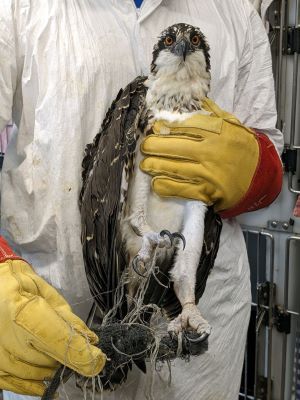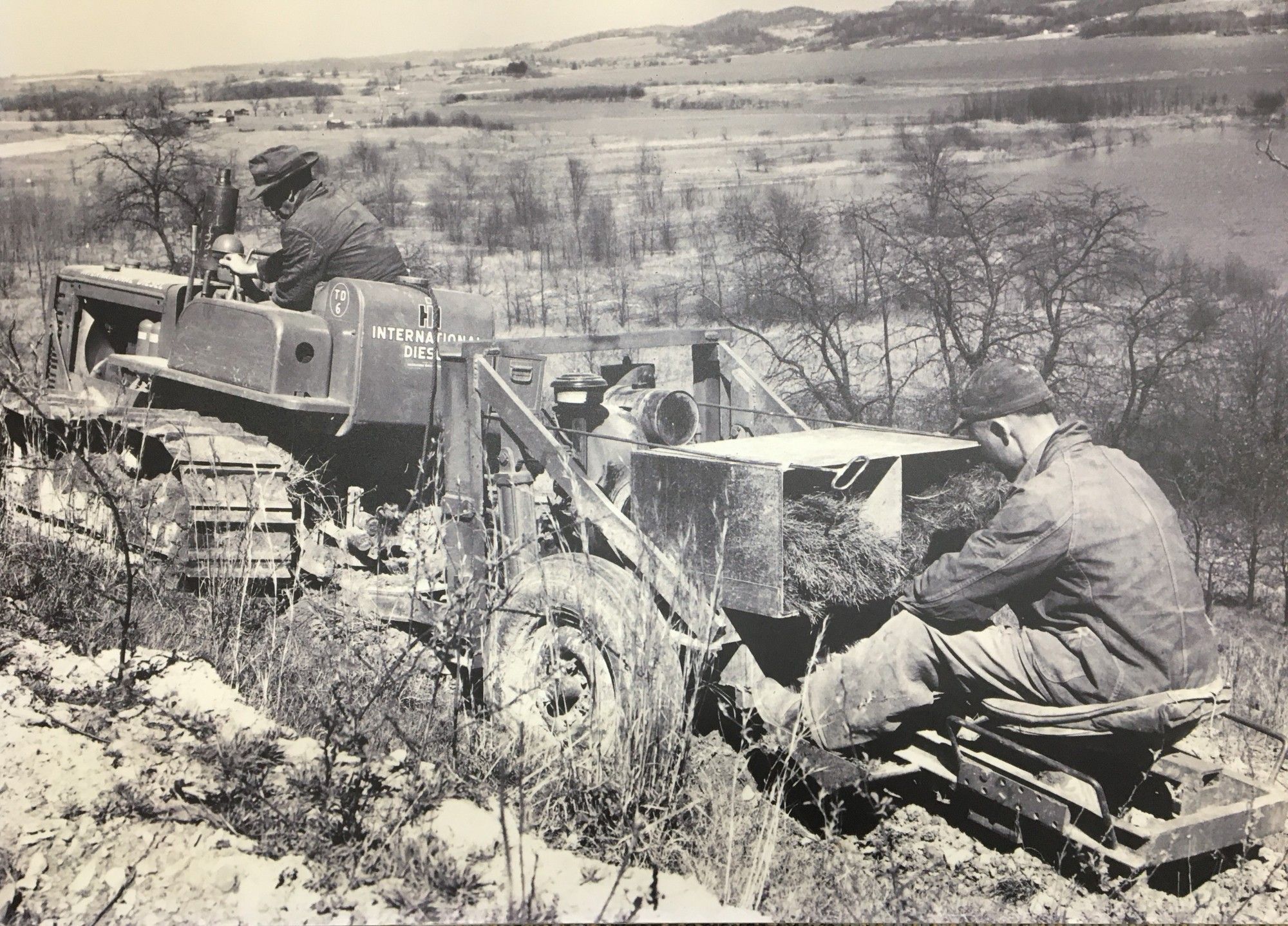MWCD has a long history of managing forests. To this day, MWCD maintains stewardship over the lands acquired in the 1930s. At that time, poor farming practices caused significant erosion of the lands, triggering water quality issues both locally and downstream. In the 1940s, and over the course of 30 years, to mitigate these inadequate farming practices, MWCD foresters, with help from the Civilian Conservation Corps, Soil Conservation Service, and National Youth Administration planted over 12 million trees covering over 7,000 acres for watershed protection in critical areas. Additionally, farmers were educated on best management practices so that the dilapidated grounds could be restored.
Initially, trees were hand planted, but foresters found a more efficient way to plant the trees by using mechanical means. A dozer was utilized to plow the soil into distinct ridges on the contour. In most cases a double plow would be used that contoured the ground into ridges and built a double layer of topsoil. The next time you walk MWCD lands, especially in a pine forest, you will still see these ridges that were created over 70 years ago. Once the ridge was formed, a dozer would come back through pulling a mechanical tree planter. The tree planter was custom built just for MWCD and could self-level which was important as plantings occurred on steep hills. The planter would open a hole in the ground allowing a single person riding the planter to physically place a pine seedling into the soil. The machine would then close the hole behind the tree once planted.
Winter and spring are the perfect time to look back and see the efforts of previous generations and the hard work they put into managing the lands. The primary tree of choice to plant were evergreens, including white pine, pitch pine, shortleaf pine, red pine, and Norway spruce. These evergreens really stand out in the winter and spring against the surrounding hardwoods. Early MWCD foresters considered planting hardwoods but had difficulties getting them to survive in the conditions of the landscape. In every location that you see pine on MWCD lands, those were once farm fields that 12-inch-tall seedlings were planted. Today, those seedlings are now upwards of 120-foot-tall pine trees.
Pine trees have significantly improved the poor soil conditions that existed long ago when the intent of foresters was to manage the forests for the best results in the future. However, many of those initial pine plantings are now overcrowded and becoming increasingly over-mature. One of the greatest principles of forest management is to limit the number of forests that contain one species. The susceptibility of mono-cultured forests to insects, diseases, and other forest pathogens is incredibly high. Wildlife diversity also thrives with more non-homogeneous forests. Adding a multitude of tree species that can provide much needed nutrition at different times of the year is crucial for wildlife diversity.
Today, MWCD foresters manage these pine plantations to help diversify the landscape. The intention is not to remove every pine from the land, but to manage the pine, primarily where there are no effects to the overall aesthetics of the lakes, campgrounds, or other significant viewsheds. Certain species of trees and wildlife depend on the habitat that is created through the management of these pine forests. In fact, an abundance of oak, hickory, and other keystone tree species take the place of the pines as they are properly managed. Wildlife diversity flourishes by creating much needed habitat in the form of young forests. Grouse, woodcock, deer, bobcats, and many species of non-game birds thrive in these young forests.
MWCD recently purchased 144 acres of land in the Tappan Lake region. This land, much like the land of the 1930’s, had been highly grazed by livestock leaving the soil compacted and highly acidic. MWCD will plant over 22,000 trees to repurpose this ground. Additionally, the trees will create great thermal cover for wildlife and aid in enhancing the water quality. It is our hope that the trees will survive into the future and improve the soil just as previous generations knew they would.
This article was written by Clayton Rico, Forest Operations Coordinator and was featured in the MWCD newsletter, LakeViews.











